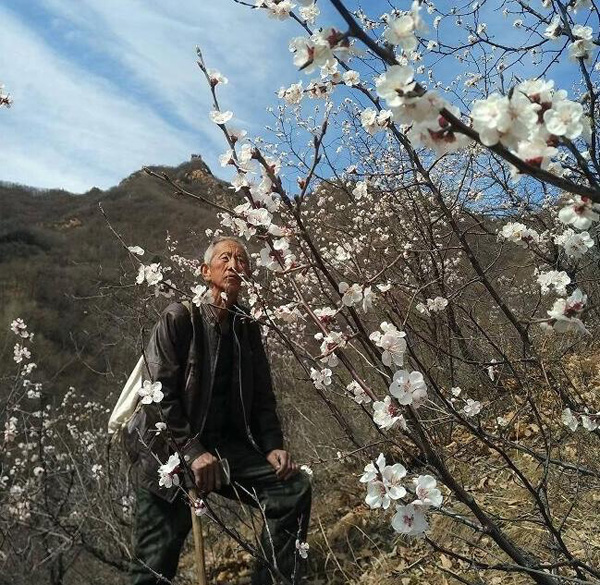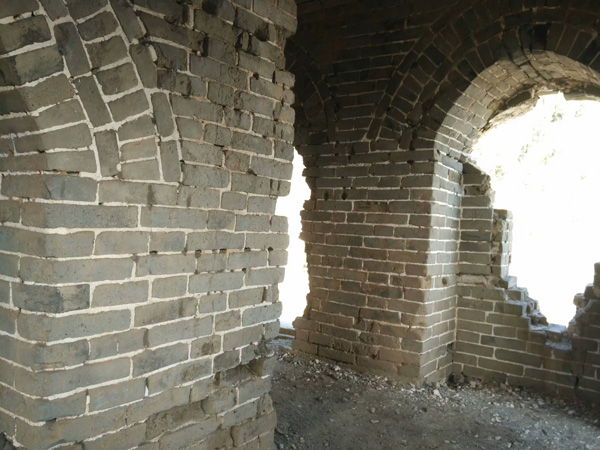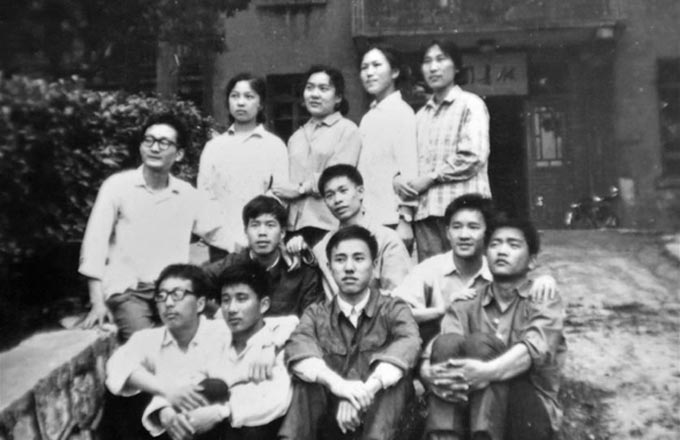Guarding the Great Wall
Liu Zonglin patrols a section of the Great Wall near Yushudi village in Chengde, Hebei province.[Photo provided to China Daily]

Volunteer patrolman has spent 40-plus years preserving, protecting famous relic
For more than four decades, Liu Zonglin has sought to protect a section of the Great Wall near his home in Chengde, North China's Hebei province.
The 72-year-old farmer has lived in Yushudi village, about 150 kilometers northeast of Beijing, his whole life.
Near the village sits a section of the wall built during the Ming Dynasty (1368-1644), but the 10 towers and one gate along the 9.88 km stretch have become badly damaged over time.
"I've lived by the Great Wall my whole life, I feel like it's my responsibility to take care of it," Liu said.
As a child, he would climb the towers with his friends - either for fun or to collect firewood for his parents.
"It's not the same anymore," he said.
"Back in 1970s, we didn't understand the historical significance of the Great Wall."
Villagers would often remove stones from the wall to build their houses, even after it was listed as a World Heritage Site by UNESCO in 1987.
To prevent such destructive behavior, Liu began carrying out regular checks of the wall and reported any damage he spotted to local government officials.
He also picked up trash and removed any weeds he saw growing through the ancient stonework.
"I tried my best to tell people that we should be protecting the Great Wall rather than destroying it," Liu said, adding that his actions sometimes drew the ire of his fellow villagers, who called him boring and officious.
"I don't care, as long as it stops them vandalizing the precious cultural heritage."
Liu's own wife has even spoken out against him, saying he should stop wasting his time and focus more on cultivating their land and feeding their cattle.
"I don't listen to her, because I am stubborn," he said, proudly.
Over time, his efforts and persistence appear to have paid off.
People stopped damaging the Great Wall and five more protectors have been recruited by the department for cultural heritage protection of Chengde, where his village is located.
In 2013, Liu's section was designated as one of the major sites protected at the national level.
It is now visited by many tourists from Beijing as it has never been repaired or rebuilt and still retains its original look, Liu said.
Gradually, more people are getting to know of the section, but he wants more.
"I have a dream that this part can be restored to its former glory in the future," Liu said.
Unlike many well-maintained parts of the wall, such as Badaling in Beijing, Shanhaiguan in Qinhuangdao, and Jinshanling in Chengde, the section in Yushudi is badly damaged, with only two of its towers in good condition.
But Liu's dream may soon come true.
According to the Relics Bureau of Chengde, the city has submitted an application for repairing the section to the nation's top government organ for the preservation of cultural relics - the State Administration of Cultural Heritage.
As of June last year, there were 3,400 protectors like Liu scattered across 404 counties along the 21,000 km of the Great Wall, according to the State Administration of Cultural Heritage.
Most of them are villagers who are familiar with local geographical conditions and can efficiently patrol their designated section, said an official at the Relics Bureau of Chengde, surnamed Du.
About a year ago, the State Administration of Cultural Heritage started to issue official work cards to Great Wall protectors, a move that shows the importance the country is putting on preserving cultural heritage.
"With their regular patrols, the protectors are irreplaceable in protecting the Great Wall," said Gu Yucai, deputy director of the State Administration of Cultural Heritage.
 |
|
A watch tower on the Yushudi section of the Great Wall is in poor condition. [Photo provided to China Daily] |



















